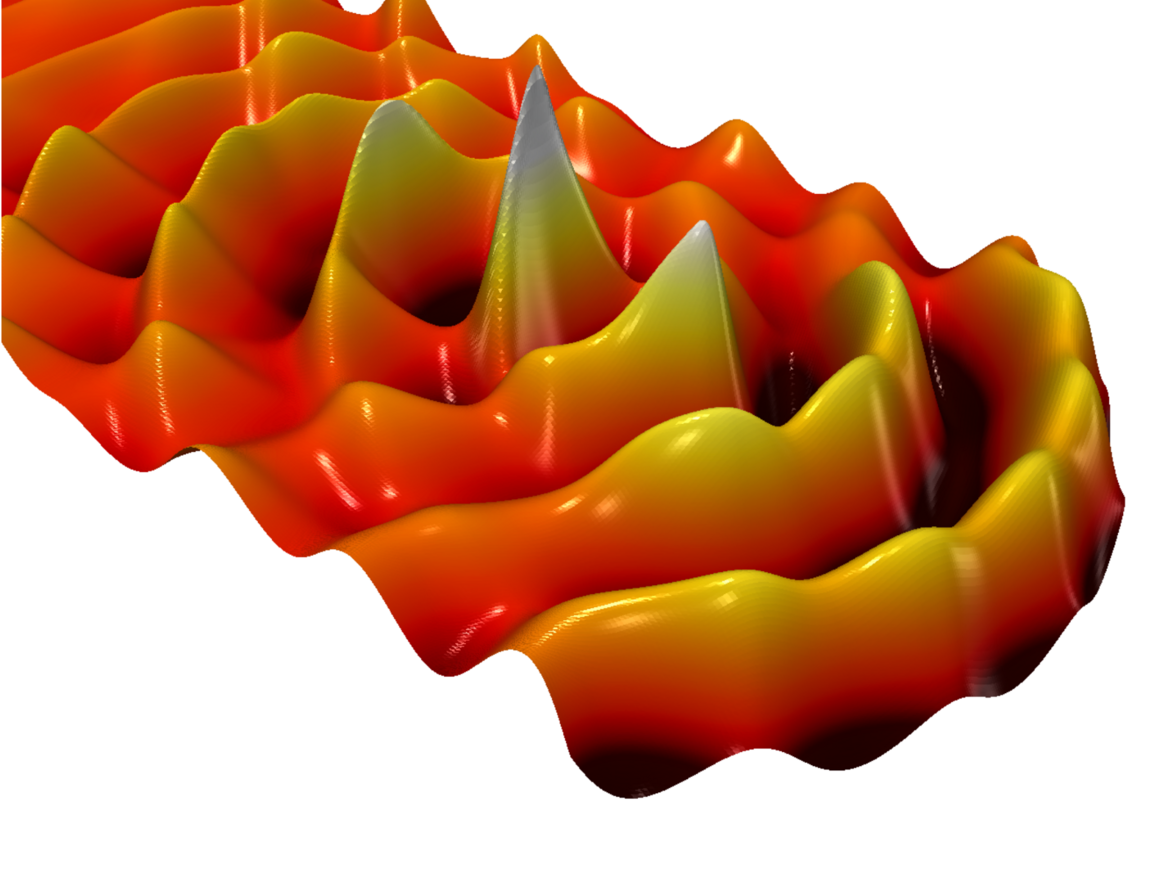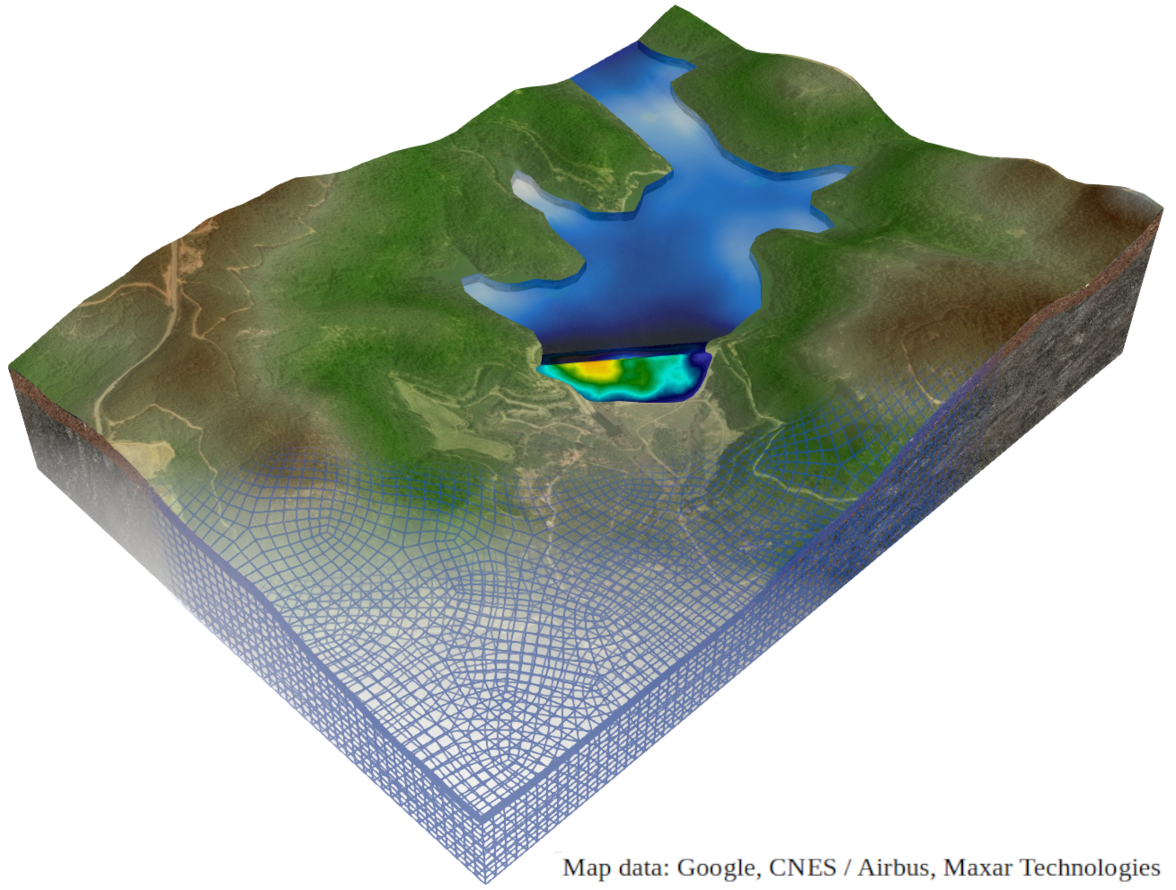- 7Numerical simulation of individual coil placement -- A proof-of-concept study for the prediction of recurrence after aneurysm coiling. 2024 more… BibTeX
- 6A discontinuous Galerkin coupling for nonlinear elasto-acoustics. IMA Journal of Numerical Analysis 43 (1), 2023, 225--257 more… BibTeX Full text ( DOI )
- 5Breaking Blood Flow with Wires in Aneurysm Coiling Treatment Simulations. SIAM News, 2023 more… BibTeX
- 4Elasto-acoustic modeling and simulation for the seismic response of structures: The case of the Tahtalı dam in the 2020 İzmir earthquake. Journal of Computational Physics 466, 2022, 111411 more… BibTeX Full text ( DOI )
- 3A high-order discontinuous Galerkin method for nonlinear sound waves. Journal of Computational Physics 415, 2020, 109484 more… BibTeX Full text ( DOI )
- 2Isogeometric shape optimization for nonlinear ultrasound focusing. Evolution Equations & Control Theory 8 (1), 2019, 163--202 more… BibTeX Full text ( DOI )
- 1Self-adaptive absorbing boundary conditions for quasilinear acoustic wave propagation. Journal of Computational Physics 388, 2019, 279--299 more… BibTeX Full text ( DOI )
Dr. rer. nat. Markus Muhr
Akademischer Rat
Technical University of Munich
Chair of Numerical Analysis (Prof. Wohlmuth)
Postal address
Boltzmannstr. 3
85748 Garching b. München
- Phone: +49 (89) 289 - 18415
- Fax: +49 89 289 18435
- Room: 5610.03.035
- markus.muhr@tum.de
Link to the chair for Numerical Mathematics.
Research Interests
My research interests are mainly within numerical analysis and simulation with a focus on the Finite Element- as well as the Lattice-Boltzmann-method and their applications within computational science and engineering. Especially I am considering applications from
- Computational (bio-medical) fluid mechanics Within the SPP 2311 project we aim for the development of a simulation tool for the coiling process of cerebral aneurysms. Within that procedure a small wire is inserted into an aneurysms, coils up within it and eventually occludes it from further blood flow through it, reducing wall shear stress and hence reducing the rupture risk. Many factors have to be considered here starting from the mechanical behavior of the special coils used, the non-Newtonian nature of blood, pulsation of vessel walls due to heart-beat up to the process of blood clotting that eventually completes the aimed for occlusion. Capturing all those effects on a highly resolved scale on real, patient-specific, complex geometries requires tremendous computational resources and efficient implementations. We hence further aim for eventually replacing the fully resolved medical devices by surrogate models, for example by porous media.
- Nonlinear acoustics High intensity focused ultrasound waves modelled by the nonlinear Westervelt / Kuznetsov's equation which exhibit steepening and distortion of the wavefront in comparison to linear waves. Such waves are used for example in the Extracorporeal Shock Wave Lithotripsy treatment of kidney stones where they are focussed onto the stone in order to shatter it into smaller debris due to their high pressure oscillations. The accurate simulation and optimization of wave focusing mechanisms as well as the propagation in acoustic media, from the source of the wave being a piezoelectric transducer, through an acoustic wave guide up to human tissue is of great importance to reduce the risks of such treatment methods. My research deals with the numerical approximation of solutions to such nonlinear wave equations in domains of different materials also in the context of elasto-acoustic coupled problems.
- Seismological applications The simulation of seismic events and their impact on building structures is of key relevance in seismology and civil engineering. What magnitude of an earthquake will a building withstand? How critical would an earthquake originating from a certain seismic fault be? Due to large uncertainties regarding for example the material properties and distributions within soil layers of the earth's crust, guaranteed results are seldomly possible. However, simulations still offer a great tool for a better understanding of the involved processes and - after validation and calibration with real data from actual seismic events - at least might allow for statistical statements regarding the central questions from above. In my research I considered full source-to-site simulations that approximate the seismic wave propagation from its originating fault up to large building sites such as a dam also considering the influence of e.g. pressure waves within the reservoir lake behind it.
Find me on:
- arXiv
- ORCID
- MathSciNet
- ResearchGate
- Google Scholar
- Mathematics Genealogy Project
- Currently my Erdős number is 5: Link
Software
I am mainly using the following open source software frameworks and packages within my research and teaching activities
- SPEED: SPectral Element in Elasto Dynamics. A high-performance spectral element code written in FORTRAN with great functionality regarding seismic models, data handling and earthquake simulations.
- waLBerla: An extremely performant Lattice-Boltzmann-method framework featuring all sorts of modern tools such as GPU-computation, fast prototyping in python and automatic code-generation.
- blender: With its original purpose lying in 3D-modelling and rendering of artistic images up to animation movies, it is also a great support in all sorts of mesh- and geometry-related tasks in science. Latest since the BVTK extension it is also the source for some of the most impressive scientific visualizations.
- gmsh: A well established open source 3D finite element mesh generator including a GUI interface, hence easy to use and getting started
- GeoPDEs: A handy and easy to start with MATLAB-package when it comes to B-splines and isogeometric analysis (IGA)
Administrative positions
- Graduate Advisor for the study program Mathematics in Science and Engineering. --> In case of study advisory requests (dt. Studienberatung) please write to msce(at)cit.tum.de
- IT supervisor for the work group Numerical Mathematics
- Associated Postdoc within the SPP2311 project: Robuste Kopplung kontinuumsbiomechanischer in silico Modelle für aktive biologische Systeme als Vorstufe klinischer Applikationen – Co-Design von Modellierung, Numerik und Nutzbarkeit
- Coordinating Postdoc within the IGSSE project: INE2 (since July 2022)
Teaching & Supervision
If you can’t explain it simply, you don’t understand it well enough.
---
It is the supreme art of the teacher to awaken joy in creative expression and knowledge.
Albert Einstein
Below you can find a portfolio of typical lectures I am involved in as well as my current lectures linking to TUM Online for dates and times. If you are interested in a student project or thesis, check out the selection of other projects under my supervision to get an impression about backgrounds, prerequisites and topics.
Since 2022 I am also a member of the TUM Learning Professional pilot program of the TUM Institute for LifeLong Learning and CareerDesign@TUM for modern methods and innovative teaching concepts in university-internal as well as -external training and education.
My teaching portfolio starts with standard courses in Numerical mathematics for maths-students (Bachelor and Master level) as well as service-lectures (e.g. higher mathematics or numerical methods) for other faculties and introductory courses to programming and scientific computing. Furthermore I am involved in special lectures for Master-students extending individual topics such as advanced finite element methods with specific applications in science and engineering or especially the Lattice-Boltzmann-method used in computational fluid dynamics. For students interested in a thesis at the chair, thematic seminars are offered to get an overview over possible topics.
- (W 23) Analysis für Informatik (MA0902) (EC)
- (W 23) Einführung in die Programmierung (MA0010) (T)
- (S 23) Lattice Boltzmann methods (CIT4130009) (EC)
- (W 22) Einführung in die Programmierung (MA0010) (L)
- (W 22) Numerik(EC)
- (S 22) Numerical Programming 2 (CSE) (MA3306) (EC)
- (W 21) Numerical Programming 1 (CSE) (MA3305) (EC)
- (W 20) Numerical Methods for Partial Differential Equations (MA3304) (EC)
- (S 20) Numerik gewöhnlicher Differentialgleichungen (MA2304) (EC)
- (W 19) Einführung in die numerische Lineare Algebra (MA1304) (EC)
- (W 19) Einführung in die Programmierung (MA8003) (T)
- (S 19) Lattice Boltzmann methods (MA5344) (EC)
- (S 19) Numerische Behandlung Partieller Differentialgleichungen (MSE) (Modul: MA 9804) (T)
- (W 18) Analysis für Informatik (MA0902) (T)
- (S 18) Numerische Behandlung Partieller Differentialgleichungen (MSE) (Modul: MA 9804) (EC)
- (W 17) Advanced Finite Elements (MA5337) (EC)
- (W 17) Hauptseminar: Non-Linear PDEs: From Modelling to Numerical Analysis and Simulation (with Prof. Wohlmuth)
- (S 17) Lattice Boltzmann methods (MA5344) (EC)
- (S 17) Einführung in die Programmierung (MA8003) (T)
- (W 16) Numerical Methods for Partial Differential Equations (MA 3303) (H)
- (W 16) Einführung in die Programmierung (MA8003) (T)
- (S 16) Numerische Behandlung Partieller Differentialgleichungen (MSE) (Modul: MA 9804) (T)
- Mentoring Programm für Erstsemester
- Mathematik Vorkurs (Mathematik / Physik) (T)
S :: Summer term
W :: Winter term
(L) :: Lecturer
(EC) :: Exercise Coordinator
(T) :: Tutor
(H) :: HiWi
My supervision experience in research covers classical Bachelor-/Master-theses as well as individual seminar-projects (e.g. within TUM Pro- and Hauptseminar). In teaching, I am coordinating Tutor(-team)s for larger lectures regarding exercise groups as well as ``background Tutor-work'' supporting the lectures with e.g. LaTeX-slides, coding examples or visualizations. Last but not least, we are often looking for HiWi-students to support us at project- and research-related tasks, mostly - but not exclusively - programming in MATLAB, python, C++.
Prerequisites for theses and projects are usually the completion of at least two numerics lectures, sound knowledge in at least one of the programming languages MATLAB, python, C++ or FORTRAN as well as an interest in topics with an engineering / physical / applicational background. Note, that for a thesis you need a TUM professor as a supervisor. If interested, you can still contact me to discuss initial steps.
Current and finished projects (selection):
- (2023) C. Feistner (Master-thesis) Chaotic Advection in Porous Media and its Impact on Solute Transport
- (2023) M. Horvat (Master-thesis) Towards Lattice Boltzmann Simulations of Two-phase River Flow
- (2022) V. Kotsev (Bachelor-thesis) Numerical Simulation of Coil Deployment in Aneurysms
- (2022) N. Overmars (Master-thesis) Modelling cerebral aneurysms with the Lattice Boltzmann Method
- (2022) L. Ruan: (Master-thesis) Lattice Boltzmann Methods for Porous Media Flows
Winter term 2024/25
| Title | Dates | Lecturer (assistant) |
|---|---|---|
| Exercises for Numerics of Differential Equations |
|
|
| Numerics of Differential Equations |
|
Summer term 2025
| Title | Dates | Lecturer (assistant) |
|---|---|---|
| Case Studies in Scientific Computing [MA4306] |
|
Awards
After the special ``Corona-semesters'' with the sudden change from in-person to complete online-teaching, I am grateful to be awarded the following teaching-prices by the student council of maths/physics/computer-science for my handling of the situation
- Teaching award of the student council Goldener Zirkel (winter term 2020/21) - Category Bester Übungsbetrieb [best exercises]
- Teaching award of the student council Goldener Zirkel (summer term 2020) - Category Digitales Gesamtkonzept [digital concept]



